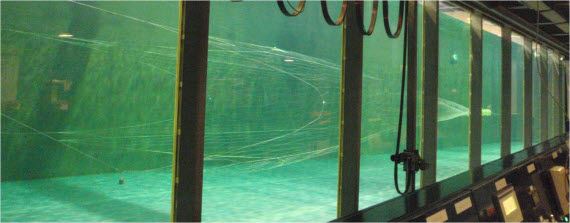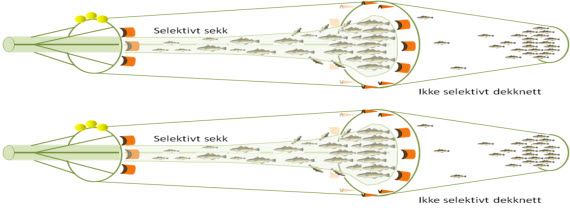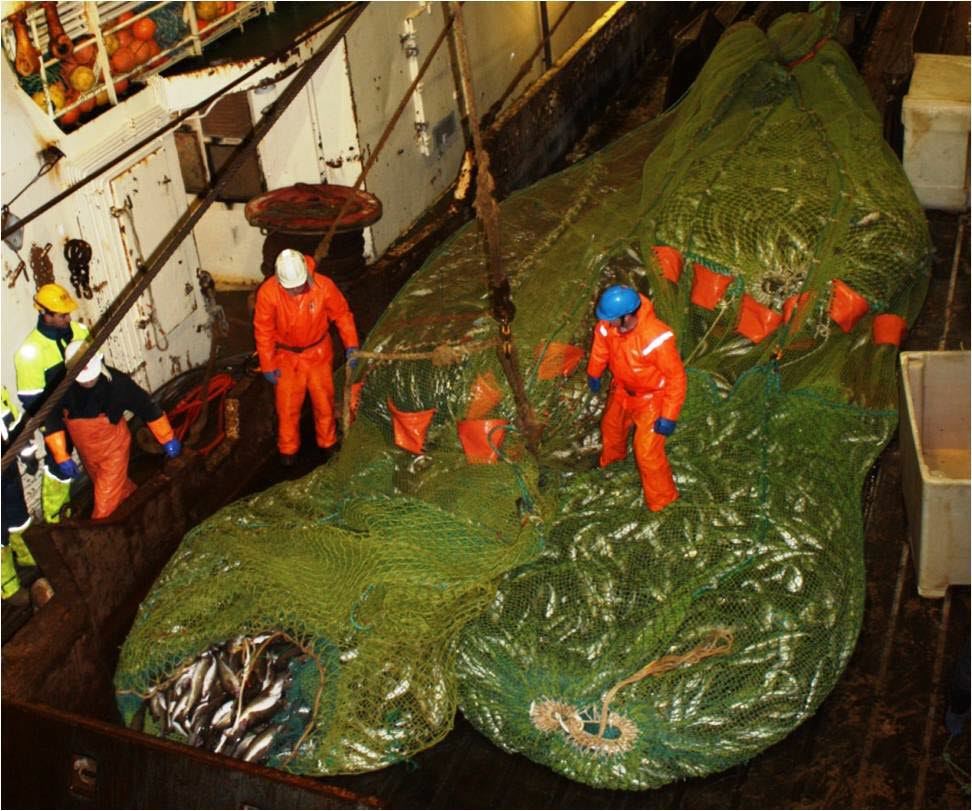Trawl industry has in recent years shown interest in developing a new trawl that allows the capture of cod, haddock and saithe no impact on the seabed. This will greatly reduce the towing resistance and thus fuel consumption and CO2 emissions. One of the problems with midwater trawl is that the selective properties the existing selection systems - ie, rigid sorting grids - is reduced when taken in relatively high densities of fish, which is a prerequisite for profitability in midwater trawl fisheries.
SINTEF Fisheries and Aquaculture is the project manager for the FHF-funded project "Selection in trawling gear" with participants from the University of Tromsø, Norwegian College of Fisheries and the Fisheries Directorate. In this project we use all our accumulated knowledge on bottom trawl selectivity (in the North Sea, Baltic Sea and Barents Sea) to develop a new selection system, based on flexible net panels. Experiments have so far been done with bags made of T90-mesh (nodal net turned 90 degrees) and ordinary bags with sorting windows (Exit Windows) in the midwater trawl fishery for cod, haddock and saithe.
The main objective of the new flexible selection system is that it must take into account the best reduction of undersized fish in front of the rear part of the trawl net. The rear section of the trawl net is the area where it is most likely that the fish may be damaged during the selection process. The new selection system will probably improve the survival of small fish that escape out of the bag. With regard to safety, the new selection systems may be easier and safer to handle on deck, especially in bad weather.
Experiments in the flume tank in Hirtshals
A scaled-down model of the trawl was tested in the flume tank in Hirtshals to detect any structural changes to the equipment by increased catches. The tests performed showed that the trawl generally maintain good structural qualities in the different towing speeds and catch which is normal for the pelagic fisheries of cod and haddock in the North-east Atlantic. At the extreme values of these two parameters (5.5 knots and 60 tons of catch) trawl will change in shape, but the overall structure is well preserved.

Results from the scientific cruise
With the trawler "Atlantic Star", it was in the beginning of November 2010, conducted a scientific cruise on the cod grounds by Hope Deep (76 ° North) to test the selection devices based on flexible net panels. Using Egersund 720 m Hex pelagic trawl with double bellow, it was possible to estimate the selective properties of two different bags in full size: a 138mm T90-sack and a 135mm "hotmelt" bag of 130mm with Exit Windows.
The results show that both T90-bag and the bag with the Exit Windows was encouraging effective in selecting the fish size, even at relatively high stocking rate (up to approx. 12 tons of fish per hour). Both bags gave stable selection regardless of capture size (range from 1.6 to 18 tons) and both systems caught an average of less than 3% of undersized fish in areas with initially up to 32% below the target fish.

Further work
One of the problems of large midtwater trawls, which was shown during this scientific cruise is that it can easily be taken too large hauls. High density means that large quantities of fish enter the trawl within a few minutes, and this is difficult to control even with a lot of electronic monitoring on the trawl. Further work in this project is scheduled for 2011 and will focus on size selection, development of facilities for the capture limit and registration of energy consumption with mid water trawl.
